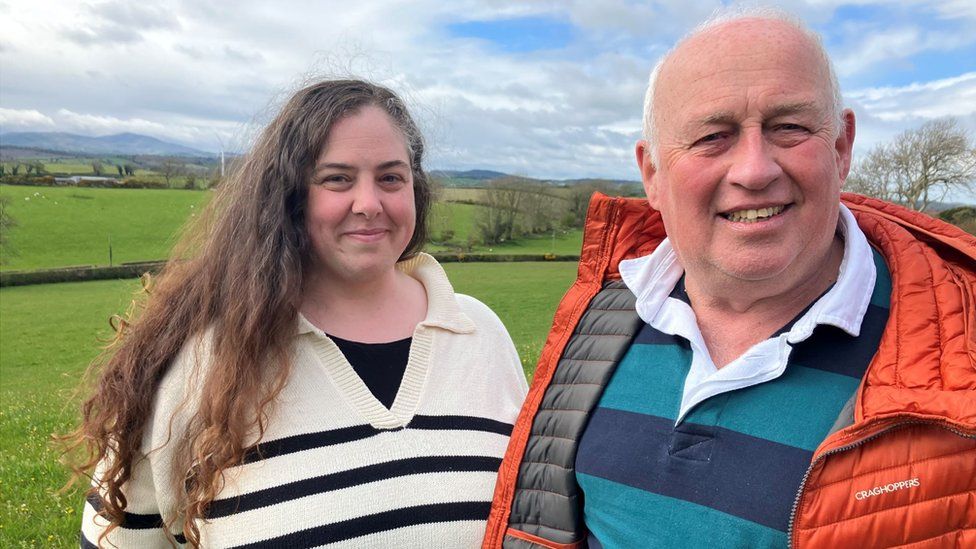GAA: Long-lost John McKay descendants walk in founder's footsteps
- Published

Amelia and Patrick McKay from Fulham have been tracing their family history in Downpatrick
On 1 November 1884, a meeting took place in County Tipperary that was to transform sport in Ireland.
It was the start of the "Gaelic Athletic Association for the Preservation and Cultivation of national Pastimes" - later, more simply, the GAA.
One of the founders was John McKay.
When historians came to honour him more than a century later, nobody knew where to find his descendants - but now, that has changed.
Patrick McKay and his daughter Amelia, Londoners who thought their family hailed from Scotland, have now been found, and they have been following in their long-lost ancestor's footsteps.
A native of Cargagh, just outside Downpatrick, John McKay was a journalist who had worked for the Belfast Morning News and later the Cork Examiner.
At the Thurles meeting he was appointed as one of the original joint secretaries of what became the GAA.
'Convoluted process'
In 2010, an Ulster History Circle blue plaque was erected outside the former HQ of the Irish News (which merged with the Belfast Morning News in the intervening years) in Belfast.
It is the norm at such events that descendants of those being honoured take centre stage. But on Donegall Street that day there were no family members.
Step forward historian Dónal McAnallen.
"Back in 2009 when myself and a couple of people went to look for him it wasn't particularly clear where he was from," he said.
"Some people thought he was from Belfast. Some thought he was Cork - but we eventually established he was from Downpatrick and had been buried in London in an unmarked grave in 1923."
Mr McAnallen says finding John McKay's descendants was a convoluted process.
Dónal McAnallen, on the right, with Amelia and Patrick McKay
"Intermittently for the past 14 years I tried to find them and about six years ago I became aware that great grandsons had been born in the 1950s and I started trying to track them down," he said.
"In fact we found three generations in one go."
And last week, standing in the field off the Bucks Head Road that was once home to the McKay family, stood Patrick McKay and his daughter Amelia.
The great grandson and great great granddaughter of John McKay said the historian's call in November came out of the blue.
"When the call came I was like 'who's that? We don't know anything about this chap,'" said Patrick.
"Is this a con? Is this a wind up? My mother never spoke about my father's family.
"Things happen and that's how it is. I always thought my father came from Dundee - I always believed I was Scottish."
Amelia added: "We just knew about my grandmother's side as being Irish and that was the only connection we had to Ireland."
Bonecastle School is in ruins now
This week the family were able to explore where they came from.
From the field at Bucks Head Road, to the nearby Ballykilbeg church where John was baptised and the ruins of Bonecastle National School where he was educated.
The family also visited Croke Park to see how far the organisation John helped found had come.
"You're touching a bit of history," said Patrick.
"It sounds odd, but there is that connection that this guy here, 150-160 years ago…that's where all of us have come from.
"That's our roots. It's great that he achieved so much and hopefully he will get more recognition."
John Devaney of Down GAA joined the McKays on their history walk
For John Devaney of Down GAA, the McKay connection is important to the local game.
"For most of the history of the GAA it's been assumed that all of those people were from Munster - but the research has shown that one of them was an Ulsterman - a Down man from here in Downpatrick," he said.
"So the significance for us is the fact that we can connect who we are and what we do right back to the foundation of the association with this man."
Related Topics
- Published20 February